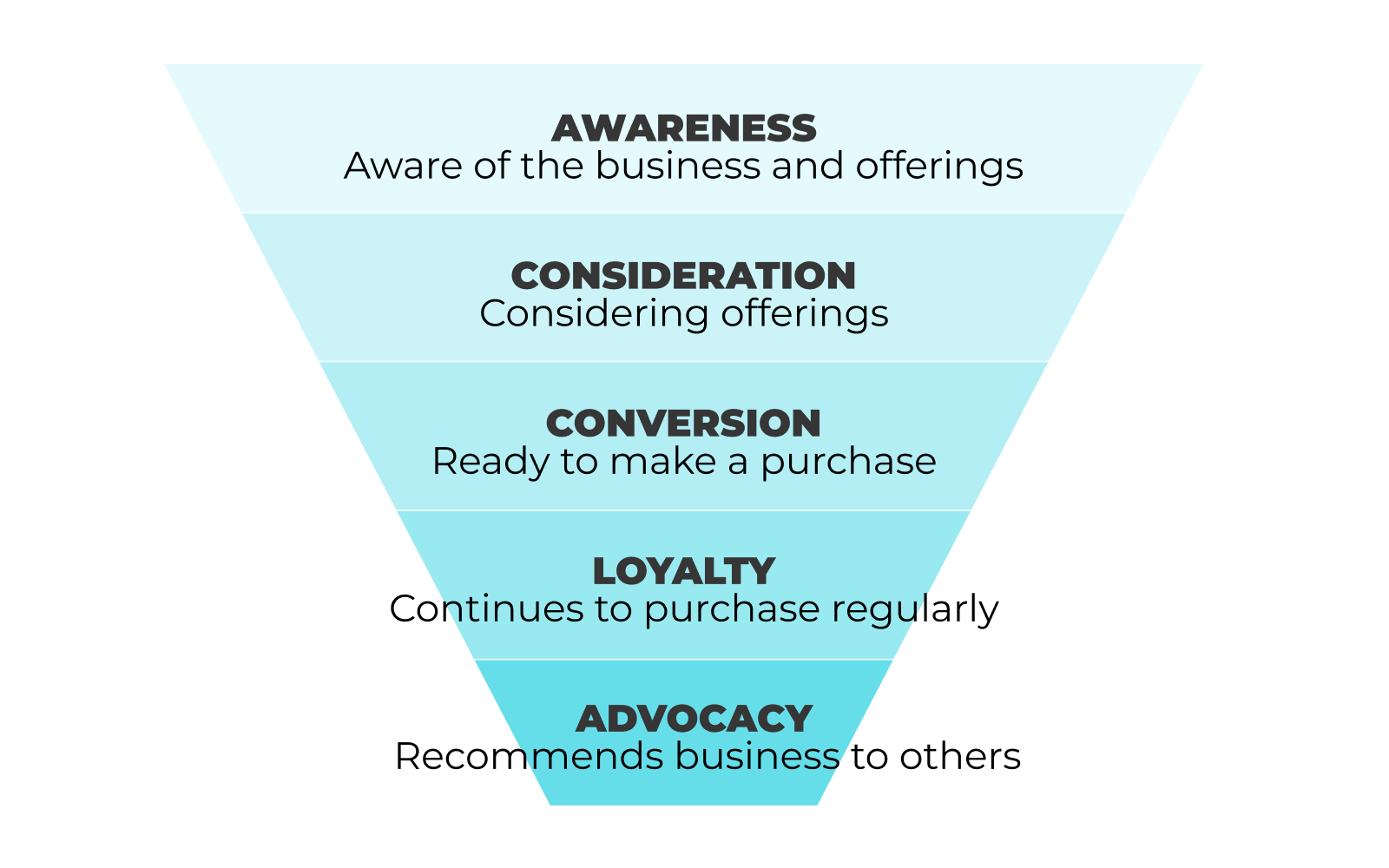How many times have you heard someone in your organization say, “I didn’t know this program existed. This is great!.”
Probably too many times to count.
Apart from being under-resourced and seen as order-takers, the biggest challenge for L&D is low learner engagement.
Your employees can’t use resources available to them if they don’t know they exist. Your one-and-done email message announcing the new Leadership Program won’t cut it.
If learners aren’t engaged with L&D programs and resources, then it is less likely that the desired behavior changes you are targeting will be impacted. It’s easier to strengthen your leadership pipeline if employees engage with the Leadership Program you’ve built.
Worse, if you are spending time building experiences that no one uses, the value of L&D initiatives across the organization will be put into question.
So how can L&D tackle its engagement problem? Start by taking a look at marketing.
Marketers are in the business of engagement and conversion, and it makes sense to look at marketing principles and models to activate users and carry them through your learning paths until they achieve your goals. One such marketing model is the marketing funnel.
What is the marketing funnel?
The marketing funnel is a visual representation of the customer journey, from the initial stages when someone learns about a business to the purchasing stage. It helps marketers to identify which stages in the funnel need to be targeted to increase conversions and sales.
It’s called a funnel since the size of the pool of people in the Awareness stage will usually be the largest and funnels down into a small number of people at the bottom in the advocacy stage. Additionally, it visually signals the stages or steps that customers typically go through when making their purchase decisions.
The marketing funnel typically comprises five stages: Awareness, Consideration, Conversion, Loyalty and Advocacy.

- Awareness is where people become aware of the business and its offerings.
- Consideration is when people start to consider your offerings.
- In the Conversion stage, people are ready to make a purchase.
- By the Loyalty stage, people are not just purchasers, but loyal customers and continue to purchase from the business.
- Advocacy is the end-goal for every marketer in which customers become advocates of the business and recommend it to others.
Although the funnel implies sequencing, stages can happen simultaneously. For example, a great advertisement might bundle Awareness, Consideration and Conversion all into one highly impactful tactic.
This is where L&D can borrow from the marketing funnel model.
How does the marketing funnel translate to L&D?
What could this marketing funnel we described above look like when applied to L&D? Rather than use the terminology as-is, below are slightly modified stages and definitions that may better align with our needs in L&D.
Stage |
Definition |
|
Awareness |
Attract key stakeholders to the learning experience and make them aware of the learning program or initiative. |
|
Consideration |
Provide more information about the learning program or initiative to get them interested and engaged. |
|
Engagement |
Focus on facilitating engagement in the learning experience or initiative. |
|
Retention |
Provide ongoing support to ensure the desired behavior change is reinforced and the learner is motivated to continue learning. |
|
Advocacy |
The stakeholders become advocates of the learning program and recommend it to others. |
Tip - This funnel is not always linear. Stages can happen simultaneously and cross-support one another. For example, use the Advocacy stage to drive Awareness, creating a flywheel.
How to use the funnel to develop a learning campaign
Leveraging a marketing funnel for L&D can help you to develop a 360° engagement campaign that guides your users through each of the stages of their journey.
There are five questions you should ask yourself to continue to better understand our audience:
- WHO needs to be involved in driving the success of the learning journey?
- Which part of the funnel are they in? Awareness / Consideration / Engagement / Retention / Advocacy
- WHAT actions do they need to take along the learning journey?
- Consider how their actions will vary depending on their stage as they move from awareness to advocacy
- WHY should the audience(s) be involved? What’s in it for them?
- How can each audience help (or hurt) our objectives? Why should they believe us? What are the facts, social proof or emotional aspects that will help our story?
- WHERE can we reach our audience(s)?
- What are the available channels (Teams/Slack, email, webinars, meetings, 1:1s, etc.) to reach them and the ideal assets (PDFs, videos, one-pagers, etc.) to leverage? Consider how the channels and tactics leveraged will vary depending on their stage as they move from awareness, consideration, engagement, and retention.
- WHEN is the best time to reach our audience?
- When is the best time to reach them throughout the learning journey based on their stage(s) in the marketing funnel?
We’ve now segmented our people, but using the marketing funnel doesn’t stop there. The next steps will be vital for learner engagement.
Reach people like a marketer
After segmenting users, the next step is to identify the ideal channels, tactics and call-to-actions to move them along the funnel.
What is your go-to means of communication? Email? Consider unique ways in which you can reach your audience above and beyond email.
Lead with a compelling message and clear call-to-actions to ensure your message resonates.
Here are some ideas you can try:
Stage |
Channels and Tactics |
Call to Action (CTA) |
|
Awareness |
Intranet Banner Ad/Carousel and Department meeting |
Learn More |
|
Consideration |
Case Studies and Ask Me Anything Webinar |
Learn More |
|
Engagement |
1:1s and personalised emails |
Get Started |
|
Retention |
Automated and personalised push notifications |
Continue Learning |
|
Advocacy |
Referrals and Word of Mouth |
Share with Others |
Tip - There is often crossover in channels and tactics across the various stages. Choose the channels and tactics that will be the most impactful in reaching and motivating your target audience.
So what would it look like if you used this model for that Leadership Program we mentioned earlier? Let’s take a look!
Stage |
Channels and Tactics |
Headline |
Call to Action (CTA) |
|
Awareness |
Intranet Banner Ad/Carousel |
Advance your career |
Learn More |
|
Consideration |
Ask Me Anything Webinar |
Unlock your full Potential |
Learn More |
|
Engagement |
Personalized emails |
You’re on your way to advancing your career |
Get Started |
|
Retention |
Automated and personalized push notifications |
Don’t stop now! Keep growing with… |
Continue Learning |
|
Advocacy |
Ambassadors & Evangelists |
I gained so much from the Leadership program. Here’s what you’ll get too… |
Learn More |
If you are unsure where to begin, send a pulse survey asking employees to self-identify how aware they are of your offerings and what channels and tactics they rely on most. From there, tailor your engagement plan and messaging based on employee feedback.
By sending this same pulse survey regularly, you can establish benchmarks to work against and track how successful your engagement efforts are.
After deploying two or more pulse surveys, compare your results to identify:
- What are the most impactful channels and tactics to drive awareness of your learning initiatives?
- How many people moved from the Awareness to the Consideration stage after your last campaign?
- How many people were in the Engagement stage last quarter versus the most recent survey?
Resource management
During economic instability, marketers and learning pros alike must consider how to use their resources best.
Looking at your team’s finite resources, you may decide you don’t need to focus on the entire funnel and that one area might need more resources and attention than others.
Create a learning campaign targeted to employees in that funnel stage since the users in the rest of the funnel are already engaged.
Become laser-focused on objectives aligned with your business needs and you will be able to show a positive ROI at the end for the year.
Measuring success
This ultimately leads to a smarter, data-driven strategy.
By focusing on specific segments and tailoring your engagement efforts accordingly, you can gather data demonstrating your team's impact.
| TL;DR - Use the marketing funnel in your L&D strategy to segment users and make smarter decisions on using your resources to target the right people, at the right time for better learner engagement. This in turn means that you can better measure success and prove your impact on the business. |

Jen Collins is a learning strategist, consultant, speaker, and facilitator with a passion for talent development, in particular, skill-specific learning programs and academies. She has consulted and facilitated learning experiences on a variety of topics for all levels of employees across B2B and B2C businesses, drawing on her combined experience in L&D and marketing to understand learner motivations and drive engagement. Jen has over 20 years of Marketing and Business Management experience, with a focus on talent development for the past five years. She lives at the Lake of the Ozarks (USA) and outside of work, Jen volunteers as an Emergency Medical Responder (EMR) and Fire Fighter for her local fire department.
`
Connect with Jen on LinkedIn
Learn In | Degreed

